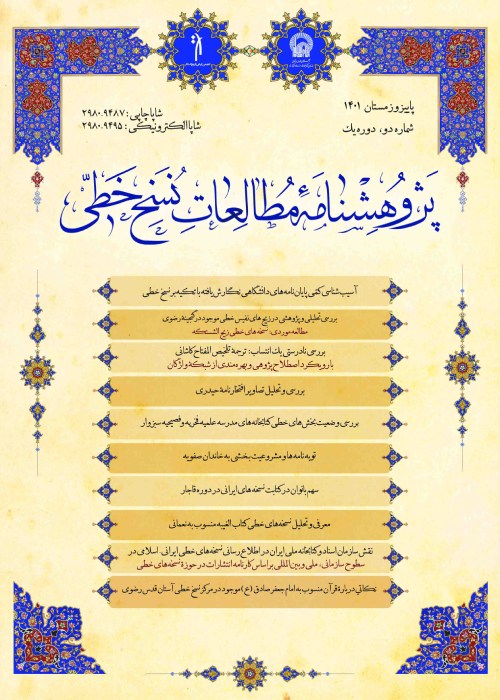Review and Analysis of the Illustrations of Iftikhārnāma-yi Ḥaydarī
Iftikhārnāma-yi Ḥaydarī composed by Mīrzā Muṣtafā Iftikhār al-‘Ulamā, known as Ṣahbā-yi Āshtīyānī, is one of the most important religious epics in the Qajar era. Iftikhārnāma has 49 diptychs of paintings with the signature of "Mīrzā Naṣrullāh". These illustrations, which are executed with strong design and delicate and skillful penning, all have a story theme and are closely related to the theme and story of the written text and their analysis is very important in understanding the painting style of lithographic copies. This research tries to introduce the most important features of these illustrations.
Research Method/Approach:
The present research has analyzed the illustrations of the only lithographic copy of Iftikhārnāma using the descriptive-analytical method and using the method of library studies and presented its conclusions using the qualitative content analysis.
By examining the illustrations in the book, it was found that all of them are related to religious themes and religious events and wars, and depiction of the impressive parts of the life of Imam Ali (A.S.). By making changes in religious painting and inspired by the text of Iftikhārnāma-yi Ḥaydarī, the illustrator has created very artistic, delicate and elaborate illustrations and has made ample use of the lithography industry to convey the religious concepts of Shi'a school. In these pictures, human figures are in the focus of attention. Conveyance of concepts that was carried out by paint prior to lithography has been carried out by script; therefore, outlining, delineating, thinness, thickness, darkness, and lightness of the scripts are extremely important in these illustrations. The main part of the text of each picture is devoted to the images of awliyā (the saints). The artistic painter represents the incidents and events that took place in the past, based on the natural factors that he experienced in the real world. For this reason, the figures of humans, the forms of the angels, the structures of the buildings, clothes and ornamental elements of the illustrations are in accordance with the traditions prevalent in the Qajar era.
- حق عضویت دریافتی صرف حمایت از نشریات عضو و نگهداری، تکمیل و توسعه مگیران میشود.
- پرداخت حق اشتراک و دانلود مقالات اجازه بازنشر آن در سایر رسانههای چاپی و دیجیتال را به کاربر نمیدهد.



